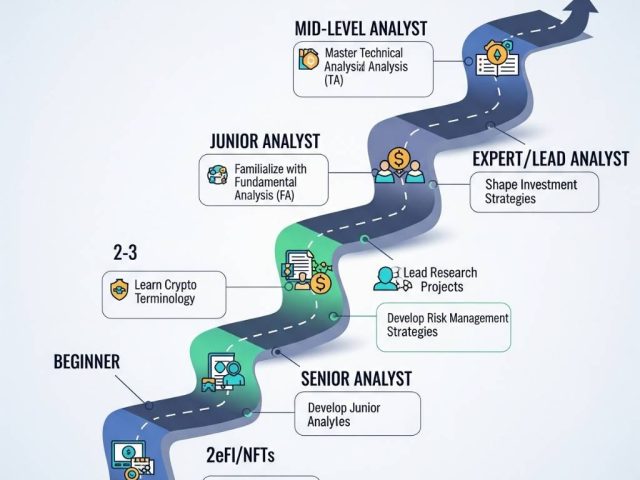This blog post will delve into the world of crypto passive income, a revolutionary concept that allows you to earn rewards on your cryptocurrency holdings. Imagine your crypto assets not sitting idle in your digital wallet, but actively generating additional income, like a hidden treasure chest waiting to be unlocked.
In the traditional financial world, passive income opportunities can be scarce and often come with limitations. Crypto, however, offers a dynamic landscape brimming with possibilities, and two of the most popular methods for generating passive income with crypto are staking and lending. But before we dive into the specifics, let’s explore the core concept of crypto passive income and why it might be an attractive option for you.
Why Consider Crypto for Passive Income?
Cryptocurrencies have captured the imagination of investors worldwide. While the price fluctuations can be thrilling (and sometimes nerve-wracking!), there’s another side to the crypto coin: its potential to generate passive income.
Here’s why crypto might be an attractive avenue for earning on the side:
- Accessibility: Unlike traditional investment options that often require a high minimum investment, crypto passive income can be accessible with even a smaller amount of cryptocurrency.
- Flexibility: Some crypto passive income methods offer a high degree of flexibility, allowing you to choose your lock-in periods and potentially access your holdings when needed.
- Potential for High Returns: Compared to traditional interest rates, some crypto passive income strategies boast significantly higher Annual Percentage Yields (APYs). However, it’s crucial to remember that higher returns often come with higher risks.
Inspirational Quote:
“The best way to predict the future is to invent it.” – Alan Kay (computer scientist)
While the crypto market is still young and evolving, the potential for innovation and future growth in passive income opportunities is undeniable. Now, let’s delve deeper into the two most popular methods: staking and lending.
Staking: Securing the Network, Earning Rewards
Imagine a high-security vault guarded by a team of validators. This analogy perfectly captures the essence of staking. In Proof-of-Stake (PoS) blockchains, validators are responsible for verifying transactions and securing the network. To participate in this validation process, users can stake their own cryptocurrency holdings.
Here’s a breakdown of how staking works:
- Locking Up Your Crypto: To become a validator, you’ll need to lock up a specific amount of the cryptocurrency native to the blockchain you’re participating in. This locked amount acts as a kind of “skin in the game,” ensuring validators act honestly and responsibly.
- Validation Process: Validators take turns validating new blocks of transactions on the blockchain. This validation typically involves complex cryptographic calculations.
- Earning Rewards: When a validator successfully verifies a block, they are rewarded with new cryptocurrency. These rewards are distributed proportionally based on the amount of crypto each validator has staked.
Benefits of Staking:
- Earn Rewards: Staking can generate attractive Annual Percentage Yields (APYs), often significantly higher than traditional savings accounts.
- Support Secure Blockchains: By participating in staking, you contribute to the security and decentralization of the blockchain network.
- Low Barrier to Entry: Many staking options are user-friendly, allowing even beginners to participate with minimal technical knowledge. Some platforms offer staking services where you don’t need to run your own validator node, making it even more accessible.
Risks of Staking:
- Volatility of Staked Crypto: The value of the cryptocurrency you stake can fluctuate significantly, impacting your overall returns.
- Locking Periods: Staking often involves locking up your crypto for a predetermined period. This means you cannot access your holdings during this time.
- Slashing Risk: In some Proof-of-Stake blockchains, validators can be penalized (or ” slashed”) for malicious or inactive behavior. This penalty can involve losing a portion of their staked crypto.
While staking offers exciting opportunities, it’s crucial to understand the associated risks before diving in. We’ll explore the world of crypto lending in the next section and delve into the side-by-side comparison of staking vs. lending to help you choose the strategy that best aligns with your goals.
Lending: Sharing Your Crypto, Growing Your Portfolio
Think of crypto lending as similar to lending money at a bank. Instead of a bank, however, you’re lending your cryptocurrency to borrowers on a crypto lending platform. These borrowers can be individuals or institutions seeking to access liquidity.
Here’s a simplified breakdown of how crypto lending works:
- Depositing Your Crypto: You deposit your cryptocurrency holdings on a reputable crypto lending platform.
- Matching with Borrowers: The platform matches your crypto holdings with borrowers who need them.
- Earning Interest: You earn interest on your deposited crypto based on the loan terms and interest rates set by the platform. Interest payments are typically made regularly, allowing you to grow your crypto portfolio over time.
Benefits of Crypto Lending:
- Earn Interest on Idle Crypto: Put your unused crypto holdings to work and generate passive income.
- Flexible Terms: Unlike staking, crypto lending often offers flexible terms, allowing you to choose loan periods that suit your needs. Some platforms even offer the option to earn interest while still maintaining some access to your holdings.
- Diversify Your Income Streams: Crypto lending can be a great way to diversify your income streams within the crypto ecosystem.
Risks of Crypto Lending:
- Counterparty Risk: There’s a risk that the borrower may default on the loan, meaning you might not receive your crypto back in full.
- Platform Risk: The lending platform itself could face security breaches or insolvency, potentially impacting your deposited crypto.
- Interest Rate Fluctuations: Interest rates offered by lending platforms can fluctuate based on market conditions.
Both staking and lending offer unique advantages and disadvantages. It’s important to carefully weigh the risks and rewards before deciding which strategy aligns best with your investment goals and risk tolerance.
Staking vs. Lending: A Side-by-Side Showdown
Now that we’ve explored the intricacies of staking and lending, let’s put them head-to-head in a table to help you compare the key factors:
| Feature | Staking | Lending |
|---|---|---|
| How it works | Users lock up crypto to validate transactions | Users deposit crypto to be lent to borrowers |
| Earning potential | Earn rewards in the form of new cryptocurrency | Earn interest on your deposited cryptocurrency |
| Risks | Volatility, locking periods, slashing risk | Counterparty risk, platform risk, interest rate fluctuations |
| Flexibility | May have lock-up periods, limited flexibility | Typically more flexible terms, easier access |
| Barrier to Entry | Can be user-friendly, some require validator nodes | Generally lower barrier to entry |
| Best for | Investors seeking high returns, supporting blockchains | Investors seeking passive income, flexible access |
Choosing the Right Path: Aligning Your Goals with Strategy
The choice between staking and lending ultimately boils down to your individual investment goals and risk tolerance. Here are some factors to consider:
- Risk Tolerance: Staking generally carries a higher risk profile due to potential price volatility and slashing risks. If you prioritize capital preservation, lending with its lower inherent risks might be a better fit.
- Investment Goals: Are you aiming for high returns and willing to lock up your crypto for a period? Then staking could be a compelling option. If you prioritize flexibility and access to your holdings, lending might be more suitable.
- Cryptocurrency Holdings: Not all cryptocurrencies are available for staking. Ensure the crypto you hold is compatible with your preferred staking or lending platform.
When to Choose Staking:
- You believe in the long-term potential of the staked cryptocurrency and are comfortable with price fluctuations.
- You want to support the security and decentralization of a Proof-of-Stake blockchain.
- You have a high risk tolerance and are seeking potentially high returns.
When to Choose Lending:
- You prioritize flexibility and want easy access to your crypto holdings.
- You have a lower risk tolerance and prefer a more stable stream of passive income.
- You hold a variety of cryptocurrencies and want to earn interest on all of them, even if they are not available for staking.
Remember: There’s no one-size-fits-all answer. You can even explore a hybrid approach, allocating a portion of your crypto portfolio to staking and another to lending to achieve a balance between risk and reward.
Case Studies: Real-World Examples of Staking and Lending Success
Let’s delve into a couple of real-world examples to illustrate the potential of staking and lending in action:
Case Study 1: Staking a Proof-of-Stake Coin
Imagine you hold Ethereum (ETH), the native token of the Ethereum blockchain, which recently transitioned to a Proof-of-Stake (PoS) model. By staking your ETH on a reputable staking platform, you could potentially earn an annual percentage yield (APY) of around 5-10% (as of July 2024). While the price of ETH itself can fluctuate, the staking rewards provide a passive income stream that can help offset any potential price dips. Additionally, you contribute to the security and decentralization of the Ethereum network.
Case Study 2: Lending Stablecoins for Interest
Perhaps you hold a basket of stablecoins, cryptocurrencies pegged to a stable asset like the US dollar. Since stablecoins offer relative price stability, lending them on a crypto lending platform can be a great way to earn a consistent interest rate. For example, some platforms might offer an APY of around 8% on lending your USDC (USD Coin). This allows you to passively grow your stablecoin holdings without risking significant price fluctuations.
Remember: These are just a couple of examples, and the specific APYs and risks will vary depending on the chosen platform, cryptocurrency, and market conditions. It’s crucial to conduct your own research before making any investment decisions.
The Future of Crypto Passive Income: Innovation on the Horizon
The world of crypto passive income is constantly evolving. Here are some emerging trends to keep an eye on:
- Decentralized Finance (DeFi): DeFi protocols are revolutionizing the way users interact with crypto. Staking and lending functionalities are becoming increasingly integrated into DeFi applications, offering users potentially higher returns and greater control over their assets.
- Yield Farming: This involves strategically moving your crypto holdings between different DeFi platforms to maximize your returns. While potentially lucrative, yield farming can be complex and carries significant risks.
- Fractional Ownership: This allows users to invest in portions of high-value assets like NFTs (Non-Fungible Tokens) or expensive Proof-of-Stake coins, opening up staking opportunities to a wider audience.
These innovations hold immense potential for the future of crypto passive income. However, it’s important to remember that the crypto market is still young and fraught with volatility. Always approach any new investment opportunity with caution and conduct thorough research before committing your funds.
Conclusion: Building Your Crypto Wealth, One Coin at a Time
Crypto passive income strategies like staking and lending offer exciting possibilities for growing your crypto holdings over time. By carefully considering your risk tolerance, investment goals, and the specific cryptocurrencies you hold, you can choose the strategy that best aligns with your financial aspirations. Remember, the key is to invest wisely, stay informed about the evolving landscape, and build your crypto wealth steadily, one coin at a time.
FAQs
1. Is crypto passive income guaranteed?
No, crypto passive income is not guaranteed. The potential returns and risks associated with staking and lending can vary depending on the chosen platform, cryptocurrency, and market conditions. It’s crucial to conduct your own research and understand the inherent risks before investing.
2. What are some reputable crypto lending platforms?
Several reputable crypto lending platforms exist, but it’s important to conduct your own research before choosing one. Some factors to consider include platform security, interest rates offered, supported cryptocurrencies, and user reviews.
3. Can I lose money with crypto passive income?
Yes, you can lose money with crypto passive income. The value of the cryptocurrency you stake or lend can fluctuate, potentially leading to capital losses. Additionally, there are platform risks and counterparty risks involved in crypto lending.
4. Is crypto passive income right for me?
Whether crypto passive income is right for you depends on your individual financial situation and risk tolerance. If you’re comfortable with some level of risk and are looking for ways to potentially grow your crypto holdings over time, then staking and lending could be valuable options to consider.
5. Where can I learn more about crypto passive income?
There are many resources available online to learn more about crypto passive income strategies. Reputable cryptocurrency news websites, educational platforms, and even some crypto lending platforms offer informative articles, guides, and tutorials.
Scentia Research Group
Want to take a deep dive into the specific opportunities and risks associated with staking a particular cryptocurrency? Scentia Research Group offers comprehensive reports analyzing various blockchain projects. Our team of experts can help you make informed decisions about your crypto investments. Contact Scentia today to learn more!





